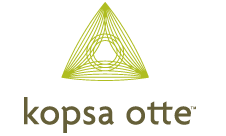Congress passed new legislation which was signed into law September 27, 2010 that gives them talking points for their reelection campaigns for the current elections. While these changes are intended to incite businesses to spend money on capital improvements, it becomes challenging for taxpayers to stay in tune to the latest depreciation rules in effect for the current year.
For those taxpayers that have profited even with the weak economy, these expanded depreciation incentives will enable taxpayers to plan their 2010 and 2011 capital expenditures and obtain very attractive tax results, thus helping to offset some of the taxable income.
Background
This legislation brings the second change of rules we have for depreciation for 2010. The changes enacted by the HIRE Act signed in to law on March 18, 2010 are no longer valid. The Section 179 level for 2010 started off at $134,000 and then went to $250,000 with the passage of the HIRE Act. Until now, 50% bonus depreciation had terminated for asset purchases after December 31, 2009. But that is now all changed.
Here is the New Stuff - Section 179 Allowance for 2010 and 2011
The Small Business legislation enacted in September 2010 increased the Section 179 expensing allowance to $500,000 for taxable years beginning in 2010 and 2011. The expensing allowance phase-out threshold has also been increased for qualifying property additions in the range of $2,000,000 to $2,500,000. The definition of qualified property under Sec. 179 remains virtually unchanged from prior law.
However, IRC Sec. 179(f) now allows Section 179 expensing (subject to a $250,000 expensing limit) for certain Qualified Real Property such as Qualified Leasehold Improvements, Qualified Restaurant Property, and Qualified Retail Improvement Property.
2007 $125,000
2008 $250,000
2009 $250,000
2010 $500,000 **
2011 $500,000 **
** $250,000 limit for Qualified Real Property
Congress has been using Section 179 expensing as a major stimulus provision for the past several years. So trying to guess what Section 179 limits will be in the future may be a futile activity, particularly with the recent tendency to enact these changes retroactively.
NOTE: For the record, IRC Sec. 179(b)(1)(C) now states that for tax years beginning after 2011, the Section 179 expensing limit is $25,000. This scheduled large reduction in the Section 179 level is actually designed to encourage capital investments in 2010 and 2011. If the large reduction actually occurs, it would be a major adjustment for many farm producers.
Retroactive Extension of the 50% Bonus Depreciation
The 50% bonus depreciation deduction is retroactively restored for qualified property acquired and placed in service prior to January 1, 2011. This means that qualified property placed in service after December 31, 2007 and before January 1, 2011 is eligible for the bonus 50% depreciation.
The definition of qualified property for the 50% bonus remains the same as under the law in effect for 2008 and 2009. To qualify, the original use of the property must commence with the taxpayer (i.e., the asset must be new rather than used), and the asset must meet the qualified property definition.
For trades, 50% bonus depreciation may be claimed on the entire adjusted tax basis of the new asset.
As a reminder, the bonus 50% depreciation is mandatory. However, the taxpayer can decline to take the 50% bonus on a class by class basis. An election statement must be placed in the return stating which class lives are being elected out of 50% bonus.
50% Depreciation Available
2007 No
2008 Yes
2009 Yes
2010 Yes
2011 No


